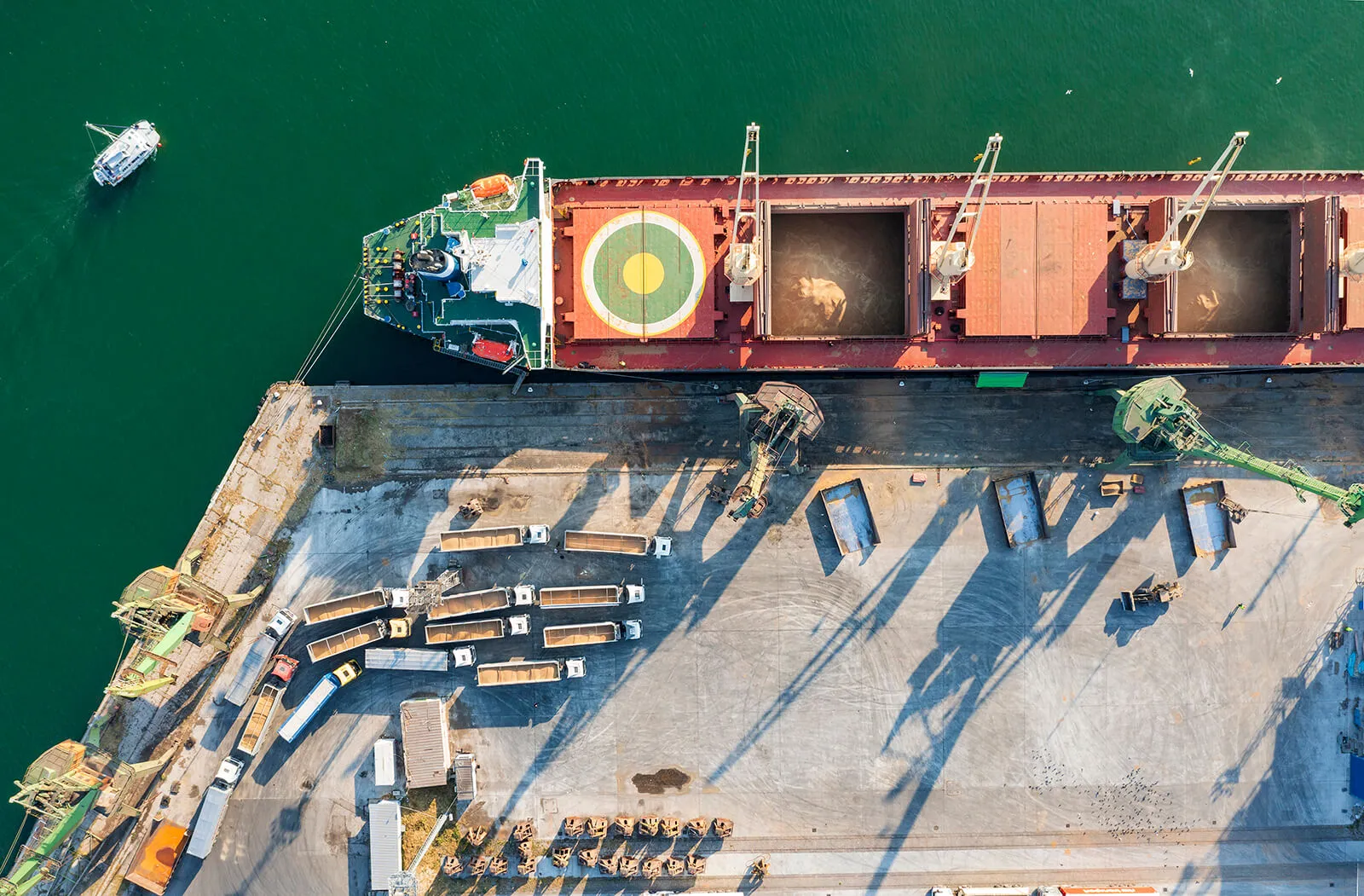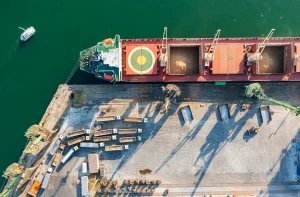Efficient cargo handling and stowage are critical aspects of maritime logistics, ensuring the safe and optimized transportation of goods. Proper cargo management not only enhances operational efficiency but also ensures compliance with international safety standards, particularly the International Convention for the Safety of Life at Sea (SOLAS). In this article, we will explore key questions frequently asked about cargo stowage, handling, and related concepts, providing in-depth insights while highlighting relevant SOLAS chapters to ensure safety and regulatory adherence.
Relevant SOLAS Chapters to Cargo Handling and Stowage:
- Chapter VI: Safe stowage and securing of cargoes.
- Chapter XII: Structural safety for bulk carriers.
- Chapter VII: Handling and segregation of dangerous goods.
- Chapter II-1: Standards for vessel stability.
- Chapter V: Safety of navigation through proper cargo management.
- Chapter XI-2: Security measures for cargo handling.
- Chapter XIV: Safety in polar waters.
Adhering to these guidelines ensures safe transport and regulatory compliance while leveraging modern technologies for enhanced efficiency.
What is Cargo Handling and Stowage?
Cargo handling and stowage refer to the processes involved in loading, securing, transporting, and unloading cargo on ships. Proper handling ensures that goods are moved safely and efficiently, while stowage focuses on optimally arranging cargo within the vessel to maintain stability, safety, and compliance with maritime regulations.
Effective cargo handling includes:
- Loading and unloading techniques (e.g., cranes, forklifts, conveyors)
- Cargo securing methods to prevent shifting (e.g., lashings, dunnage)
- Safety procedures to protect workers and goods
- Compliance with international shipping regulations (such as the IMDG Code for hazardous materials)
What Are the Two Types of Stowage?
On ships, cargo is typically stowed in two ways:
- On Deck Stowage – Containers or cargo units are placed on the ship’s deck, exposed to weather conditions.
- Under Deck Stowage – Cargo is stored in the ship’s holds, providing better protection from external elements.
The choice between on-deck and under-deck stowage depends on cargo type, weight distribution, vessel design, and regulatory requirements.
What Are the Basic Rules for Cargo Stowage and Securing?
Proper cargo stowage and securing prevent accidents, cargo loss, and damage. The fundamental principles include:
- Weight Distribution – Heavy cargo should be placed at the bottom to maintain stability.
- Securing Methods – Lashings, twist locks, and straps prevent shifting during transit.
- Ventilation Considerations – Certain goods, such as perishable items, require proper airflow.
- IMDG Code Compliance – Dangerous goods must be stored according to international regulations.
Adhering to these rules ensures that cargo remains safe and that the vessel maintains structural integrity and balance.
What is the Difference Between Cargo Handling and Storage?
- Cargo Handling refers to the physical movement of goods, including loading and unloading operations.
- Cargo Storage involves keeping cargo in designated storage areas (e.g., warehouses, ship holds) until it is ready for transport.
Both processes are crucial in the global supply chain, ensuring smooth cargo flow from origin to destination.
What Are the Two Types of Cargo?
Cargo is broadly classified into:
- Bulk Cargo – Loose commodities such as grain, coal, or oil that are transported in large quantities.
- Containerized Cargo – Goods stored in standard shipping containers for easy handling and transfer.
Other specialized categories include liquid cargo, breakbulk cargo, and project cargo, each requiring specific handling and stowage methods.
Understanding cargo handling and stowage is essential for efficient and safe maritime transport. By following best practices and adhering to international regulations, shipping companies can ensure that cargo reaches its destination securely and efficiently. Whether dealing with bulk shipments or containerized goods, proper stowage and handling techniques play a crucial role in global trade.
This article provides valuable insights into maritime cargo management, making it a useful resource for industry professionals and logistics enthusiasts alike.
Code of Safe Practice for Cargo Stowage and Securing (CSS Code)
Background
The accelerations acting on a ship in a seaway result from a combination of longitudinal, vertical and predominantly transverse motions. The forces created by these accelerations give rise to the majority of securing problems. The hazards arising from these forces should be dealt with by taking measures both to ensure proper stowage and securing of cargoes on board and to reduce the amplitude and frequency of ship motions.
In this regard, the Assembly adopted the Code of Safe Practice for Cargo Stowage and Securing (CSS Code) in November 1991 by resolution A.714(17). The Assembly recommended that Governments implement the Code at the earliest possible opportunity and requested the Maritime Safety Committee to keep it under review and amend it as necessary.In this regard, the CSS Code has undergone subsequent changes through the years as follows:MSC/Circ.664; MSC/Circ.691; MSC/Circ.740; MSC/Circ.812; MSC/Circ.1026; MSC.1/Circ.1352; MSC.1/Circ.1352/Rev.1.
Purpose
The purpose of the CSS Code is to provide an international standard to promote the safe stowage and securing of cargoes by:
- drawing the attention of shipowners and ship operators to the need to ensure that the ship is suitable for its intended purpose;
- providing advice to ensure that the ship is equipped with proper cargo securing means;
- providing general advice concerning the proper stowage and securing of cargoes to minimize the risks to the ship and personnel;
- providing specific advice on those cargoes which are known to create difficulties and hazards with regard to their stowage and securing;
- advising on actions which may be taken in heavy sea conditions; and
- advising on actions which may be taken to remedy the effects of cargo shifting.
In providing such advice, it should be borne in mind that the Master is responsible for the safe conduct of the voyage and the safety of the ship, its crew and cargo.
General Principles
All cargoes should be stowed and secured in such a way that the ship and persons on board are not put at risk.
The safe stowage and securing of cargoes depend on proper planning, execution and supervision.
Personnel commissioned to tasks of cargo stowage and securing should be properly qualified and experienced.
Personnel planning and supervising the stowage and securing of cargo should have a sound practical knowledge of the application and content of the Cargo Securing Manual.
In all cases, improper stowage and securing of cargo will be potentially hazardous to the securing of other cargoes and to the ships itself.
Decisions taken for measures of stowage and securing cargo should be based on the most severe weather conditions which may be expected by experience for the intended voyage.
Ship-handling decisions taken by the master, especially in bad weather conditions, should take into account the type and stowage position of the cargo and the securing arrangements.
Reference: https://www.imo.org/en/OurWork/Safety/Pages/CSS-Code.aspx



Hello I am so grateful I found your web site, I really found
you by error, while I was researching on Askjeeve
for something else, Anyways I am here now and would just like
to say thanks for a fantastic post and a
all round entertaining blog (I also love the theme/design),
I don’t have time to read through it all at the minute but I
have saved it and also added in your RSS feeds, so when I have time I will be back to read
more, Please do keep up the great job.
Hey there! This is my first visit to your blog! We are a team of volunteers and starting a new initiative in a community in the same niche.
Your blog provided us valuable information to work on. You
have done a outstanding job!
You can certainly see your expertise in the
article you write. The sector hopes for even more passionate writers such as you who aren’t afraid to say how they believe.
Always follow your heart.
Hi there Dear, are you actually visiting this web site daily,
if so then you will without doubt get good experience.
I believe this is among tthe most significant info for me.
And i’m lad reading your article. But wanna remark on some basic things, The website
style is wonderful, the articles is in point oof faxt nice : D.
Excellent task, cheers